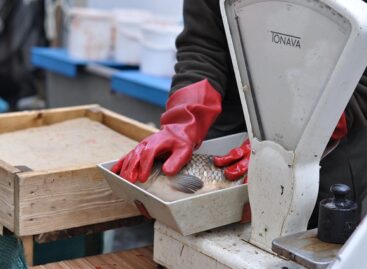EM Deputy State Secretary: the HungAIRy project aimed at improving air quality is halfway through
The HungAIRy LIFE integrated project aimed at improving air quality, launched in 2019, has reached its halfway point – said the Deputy State Secretary for Environmental Protection of the Ministry of Energy in Budapest on Wednesday.

(Photo: Pixabay)
Nikoletta Keszthelyi stated that the total budget of the program is HUF 5.2 billion, 40 percent of which is realized from Hungarian sources. The 8-year project serves the implementation of air quality plans in 10 settlements in 8 regions of the country through the development of emission databases and comprehensive attitude-shaping programs. Among the latter, he cited as an example the Borrowed Air program, launched in February this year, in which elementary school students are introduced to information related to air quality and the possibility of taking action against air pollution. They cooperate with the National Meteorological Service (OMSZ) in a program that lasts until the end of the year, with which they are able to reach thousands of students: elementary school students receive information about air pollutants, among other things, on the OMSZ measuring bus.
According to Nikoletta Keszthelyi, HungAIRy is one of the priority projects of government measures related to air quality
He pointed out that the quality of human life is fundamentally determined by the cleanliness of the air, and that air pollution has a significant health-damaging effect. Therefore, it is a clear social interest to continuously reduce the emission of polluting substances, to improve the quality of the air and, where it is not yet polluted, to preserve its purity. He pointed out that the Ministry of Energy developed the National Air Pollution Reduction Program with the involvement of several specialist areas and other ministries. It covers all emitting sources, so it includes measures for industry, agriculture, transport, as well as the population and institutional sectors, and also in the field of energy. With the scheduled implementation of the program, it is possible to increase life expectancy and to reduce the number of illnesses caused by air pollutants.
Nikoletta Keszthelyi indicated that industry and factories are no longer the most significant source of pollution, but the residential sector. Because the airborne dust that enters the air comes to the greatest extent from inadequate household burning and heating, as well as from the illegal burning of waste. He added that Fűts okosan started already in 2014! program, the website of which contains a lot of information about, among other things, correct firing.
Nikoletta Keszthelyi recalled that since the start of the inter-sector action program for the reduction of hotel dust in 2011, measures worth more than HUF 300 billion have been implemented in the transport, agricultural, industrial and residential sectors. As examples, he mentioned the designation of zones protected from freight traffic, the green bus program, the home renovation program and the development of electromobility.
MTI
Related news
Balázs Hankó: there is huge potential at the Gödöllő University
🎧 Hallgasd a cikket: Lejátszás Szünet Folytatás Leállítás Nyelv: Auto…
Read more >Cattle farmers receive new targeted support
🎧 Hallgasd a cikket: Lejátszás Szünet Folytatás Leállítás Nyelv: Auto…
Read more >István Nagy: there will be enough Hungarian fish for every family’s table
🎧 Hallgasd a cikket: Lejátszás Szünet Folytatás Leállítás Nyelv: Auto…
Read more >Related news
Challenges of the retail sector: retail has become more crisis-resistant
🎧 Hallgasd a cikket: Lejátszás Szünet Folytatás Leállítás Nyelv: Auto…
Read more >NGM: conscious shopping for peaceful holidays, consumer protection advice for the Christmas period
🎧 Hallgasd a cikket: Lejátszás Szünet Folytatás Leállítás Nyelv: Auto…
Read more >How to avoid the hassles of online shopping?
🎧 Hallgasd a cikket: Lejátszás Szünet Folytatás Leállítás Nyelv: Auto…
Read more >






